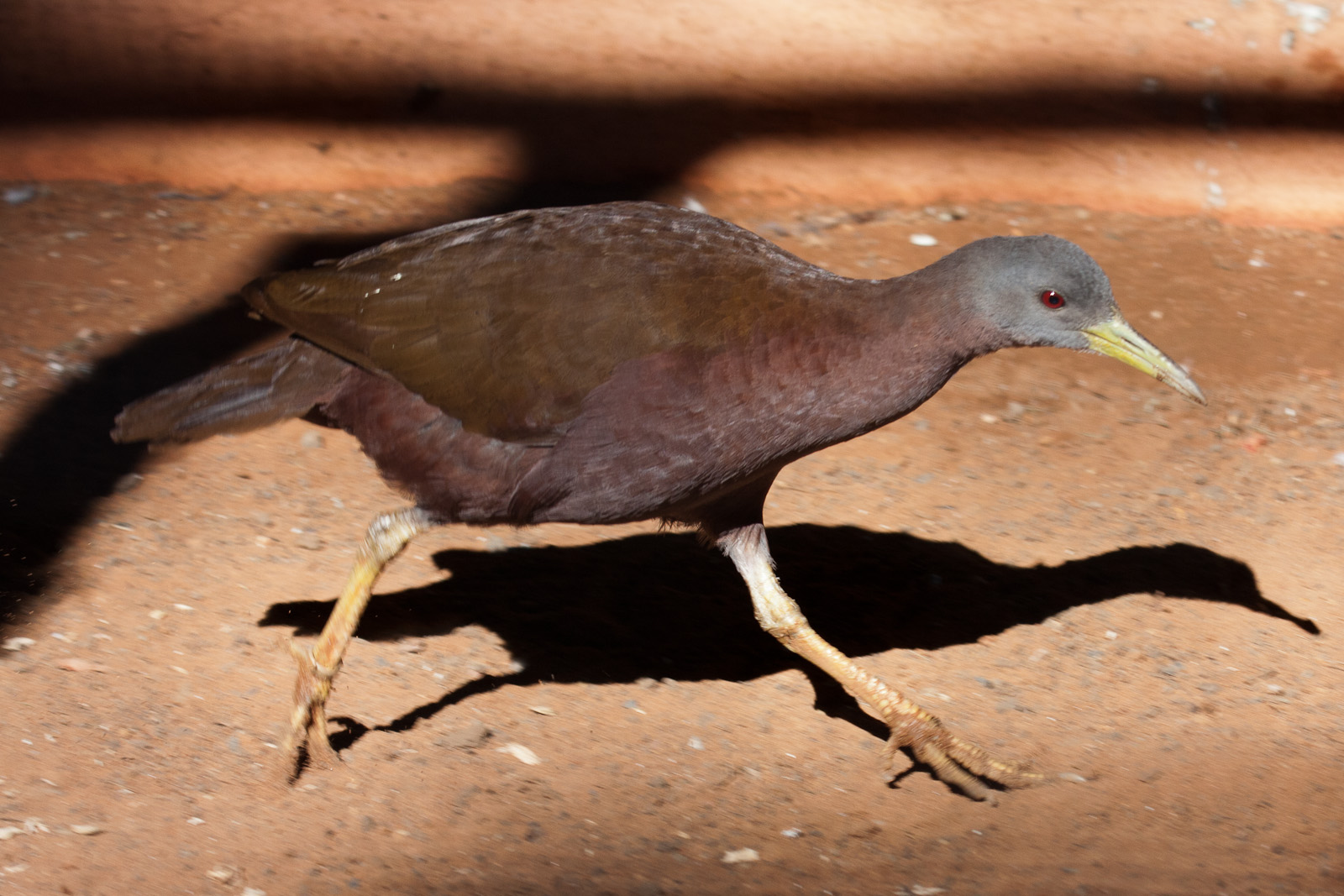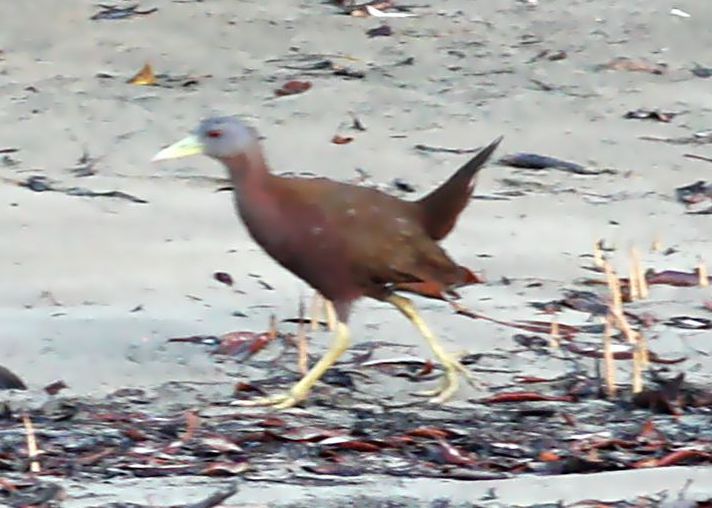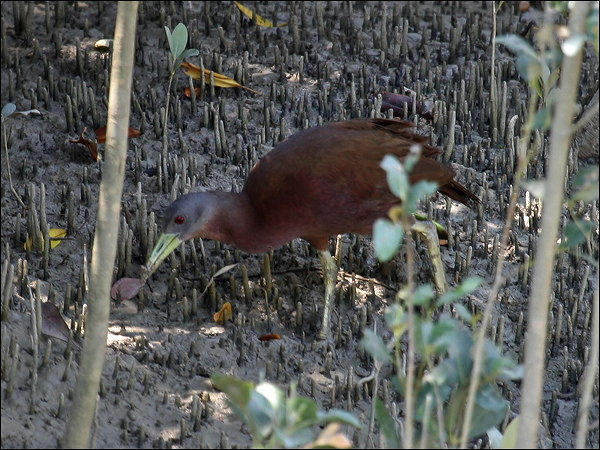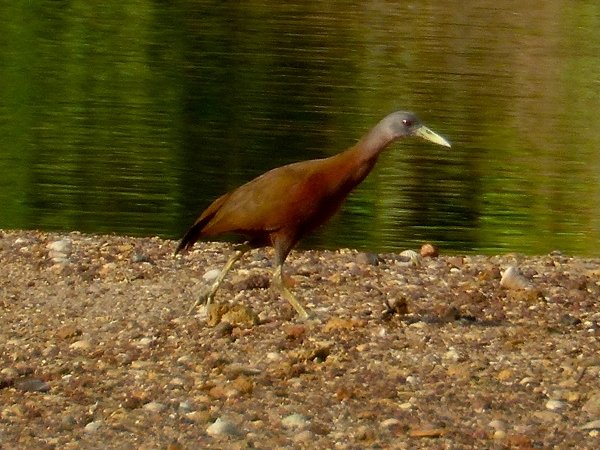
Eulabeornis castaneoventris
SUBFAMILY
Rallinae
TAXONOMY
Eulabeornis castaneoventris Gould, 1844, Flinders R., Gulf of
Carpentaria. Two subspecies recognized.
OTHER COMMON NAMES
French: Rвle а ventre roux; German: Mangroveralle; Spanish:
Cotara Australiana.
PHYSICAL CHARACTERISTICS
17.3–20.5 in (44–52 cm); 1.2–2.0 lb (550–910 g). Thickset,
with gray head and pinkish brown underparts. Three color
morphs, with upperparts olive, chestnut, or olive-brown. Juvenile
has duller bare parts.
DISTRIBUTION
E. c. castaneoventris: northern coast of Australia; E. c. sharpei:
Aru Island.
HABITAT
Dense mangroves.
BEHAVIOR
Diurnal and nocturnal, according to tidal cycle. Shy, secretive,
and alert. Has a strutting walk; runs very swiftly. Gives a characteristic
harsh screech. Territorial when breeding.
FEEDING ECOLOGY AND DIET
Eats mainly crabs; also other invertebrates. Uses stones as
anvils to break shells of hermit crabs.
REPRODUCTIVE BIOLOGY
Monogamous. Breeds September through February. Nest a
bulky platform of sticks, grass, leaves, bark and seaweed, in
mangroves. Eggs four to five young fledged at nine weeks.
CONSERVATION STATUS
Not threatened. Patchily recorded; possibly overlooked. Probably
not uncommon locally.
SIGNIFICANCE TO HUMANS
None known.
Other popular Animals
Photo Gallery of - Chestnut rail




 Animalia Life
Animalia Life